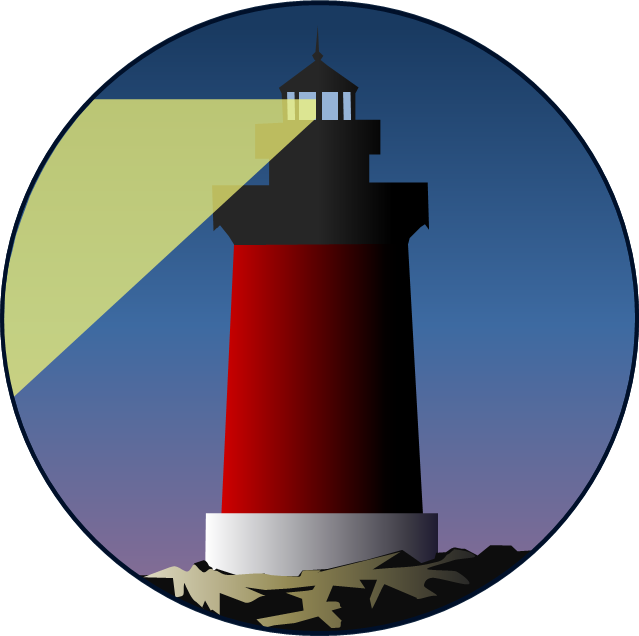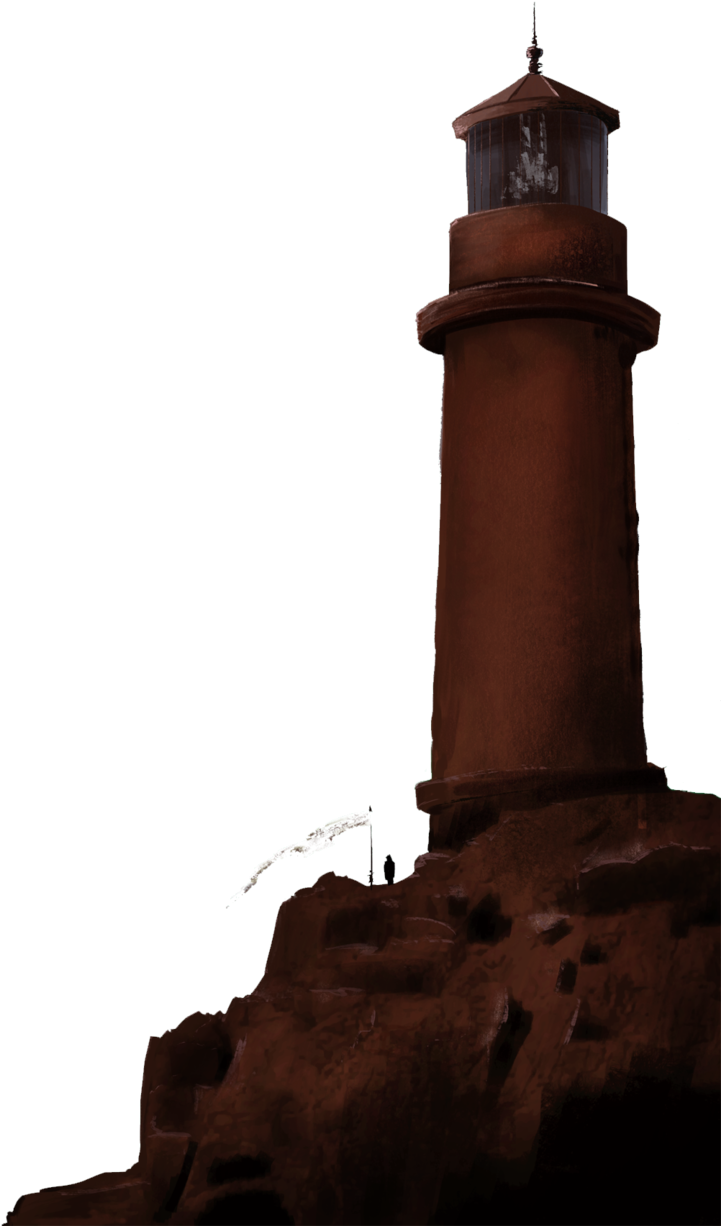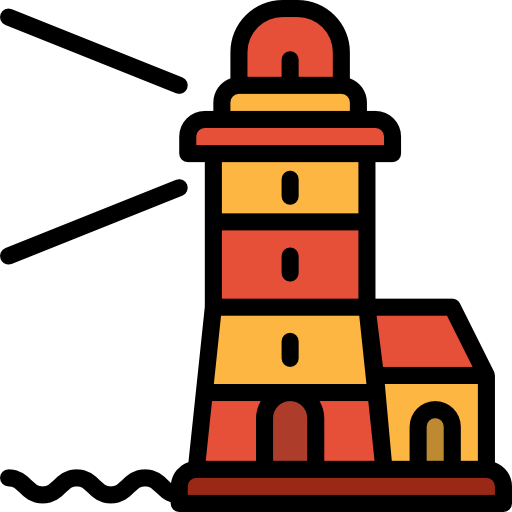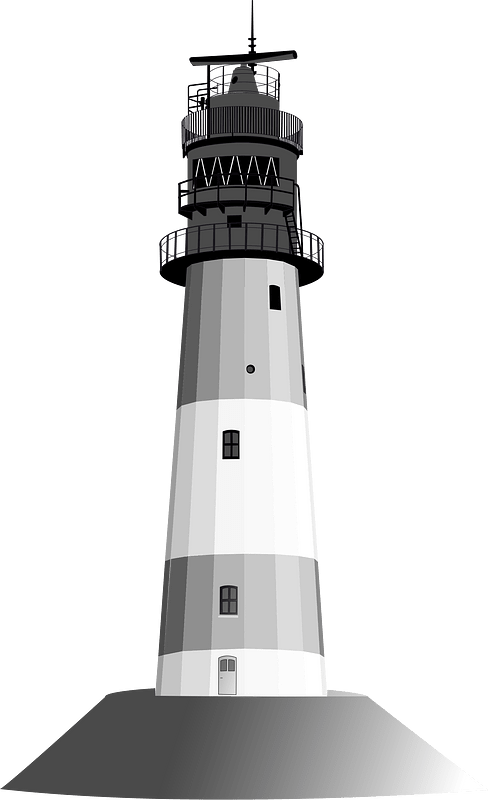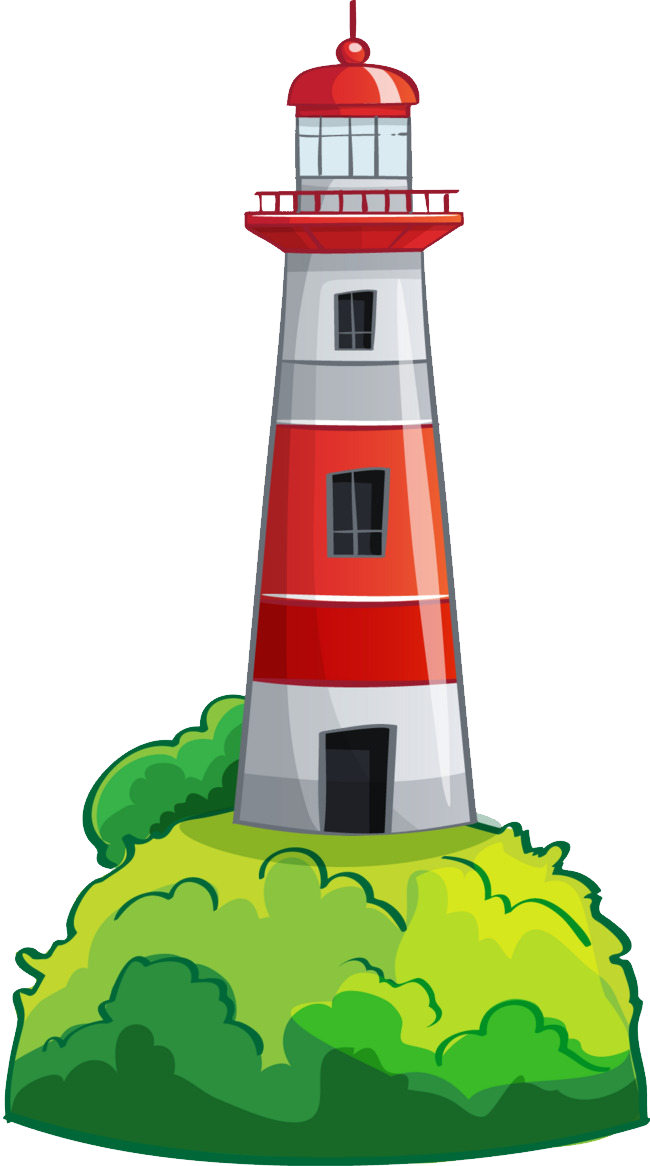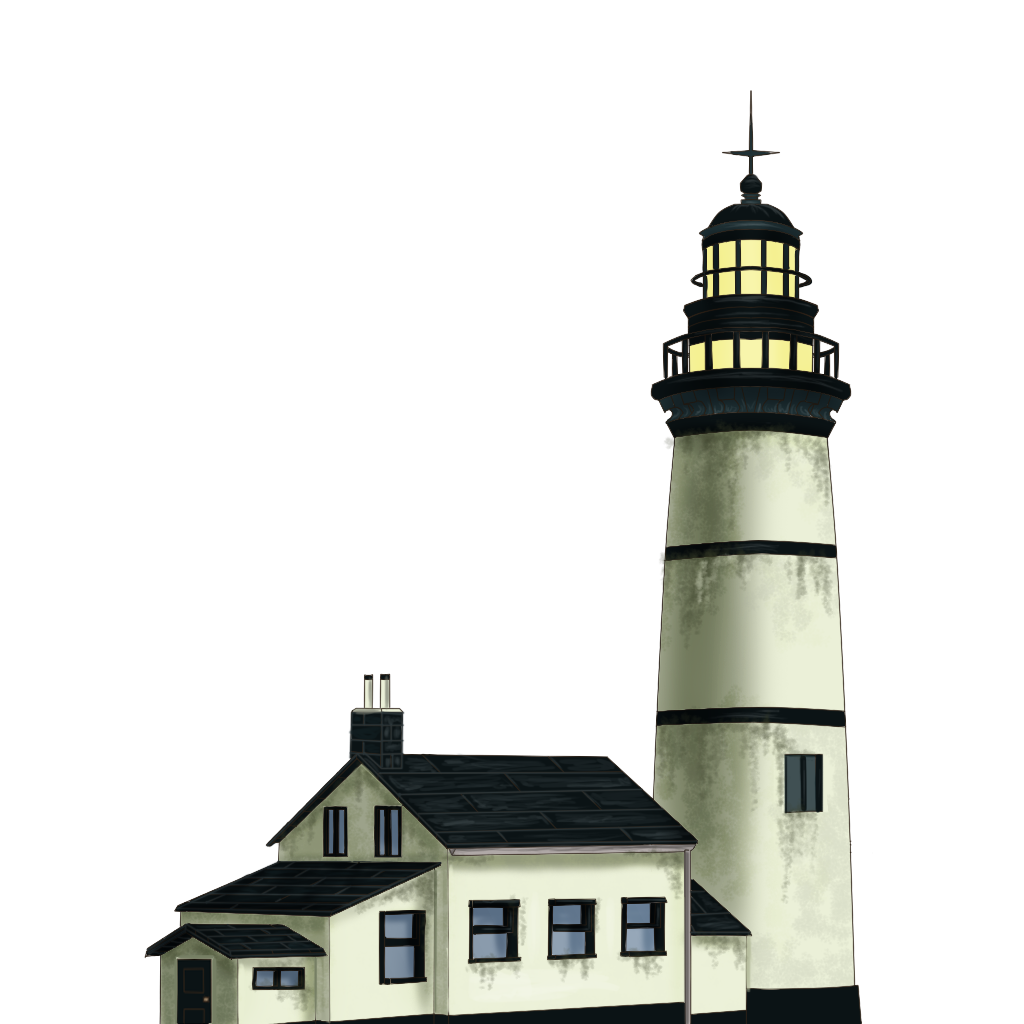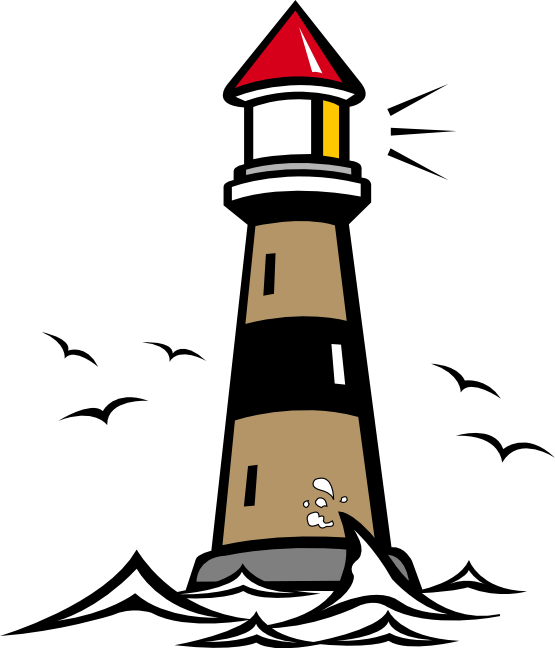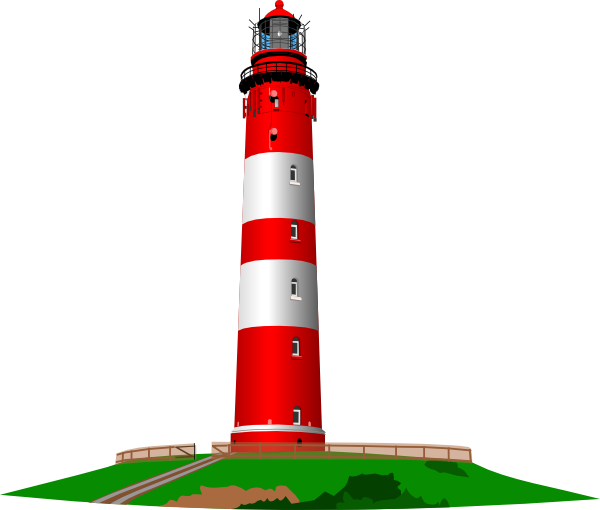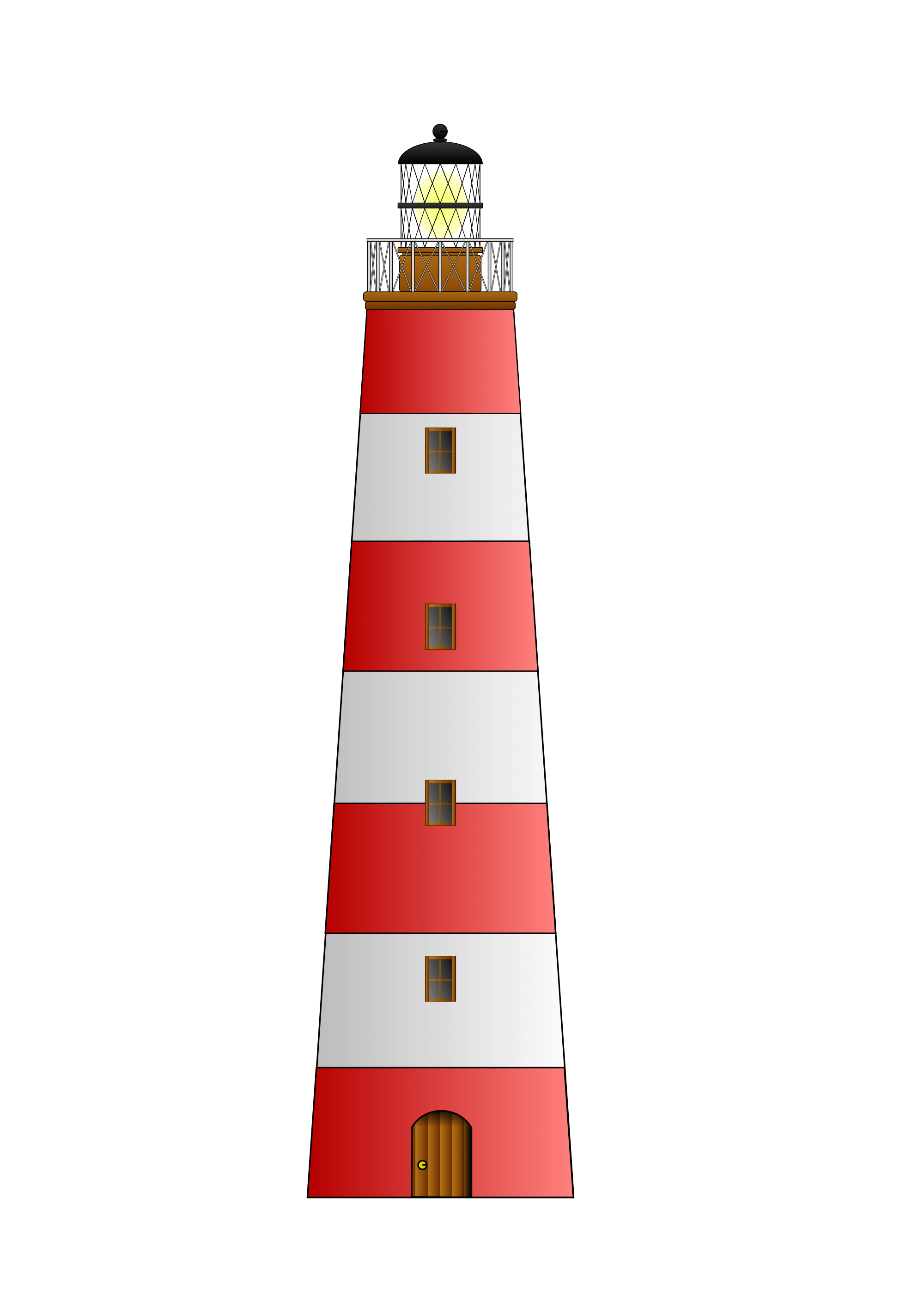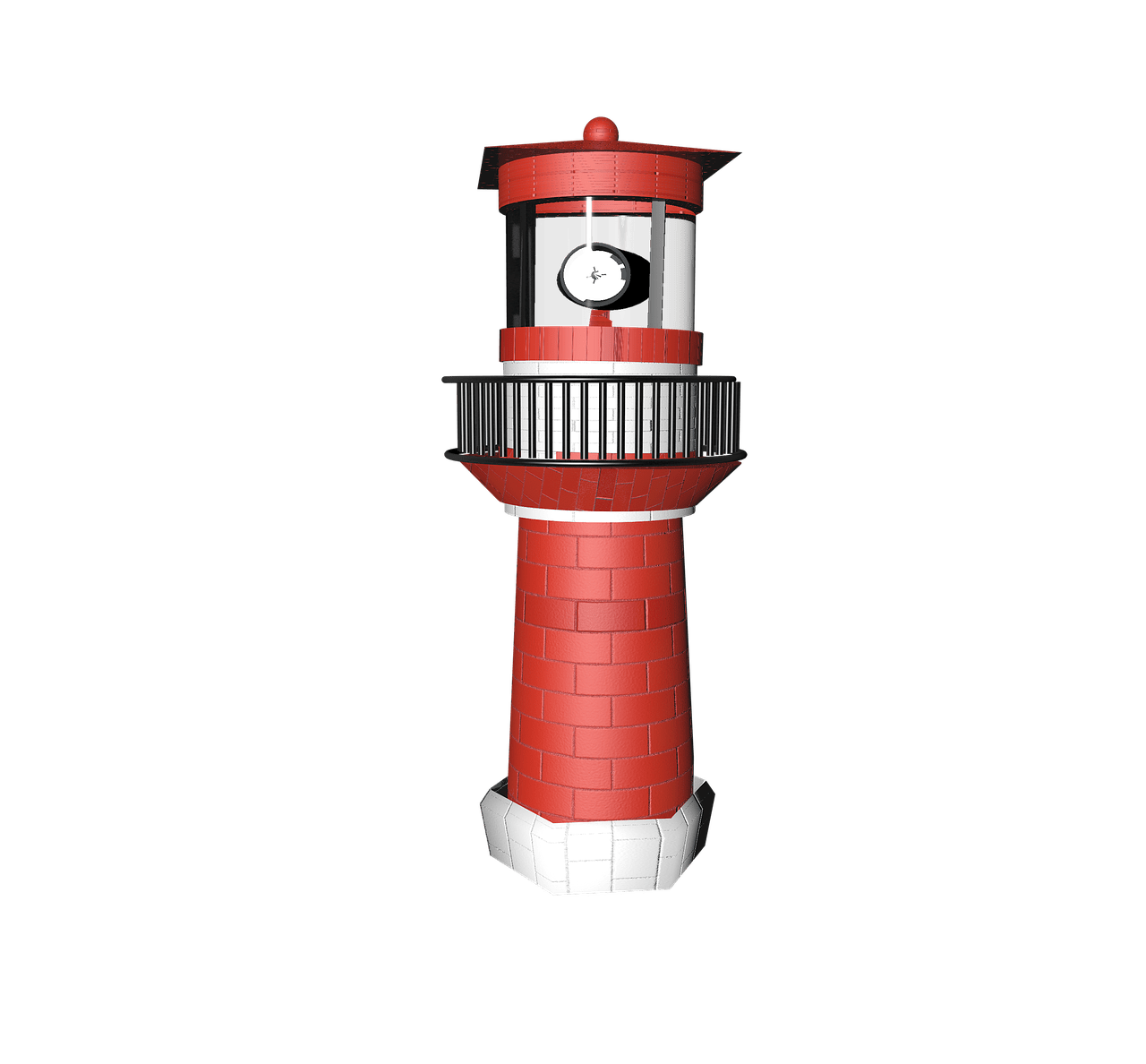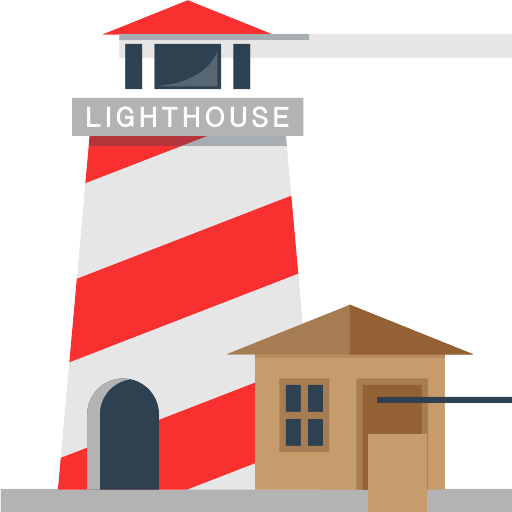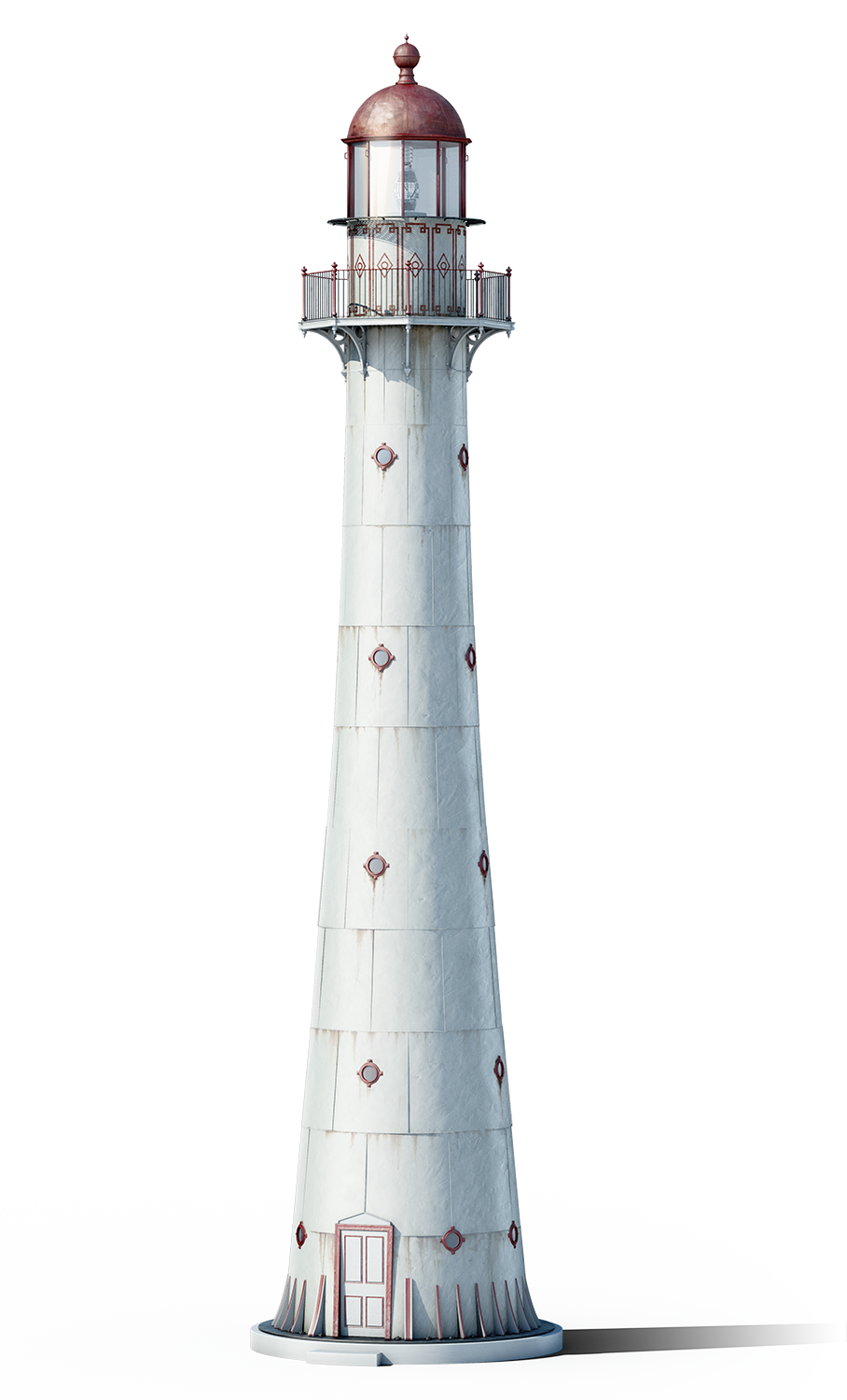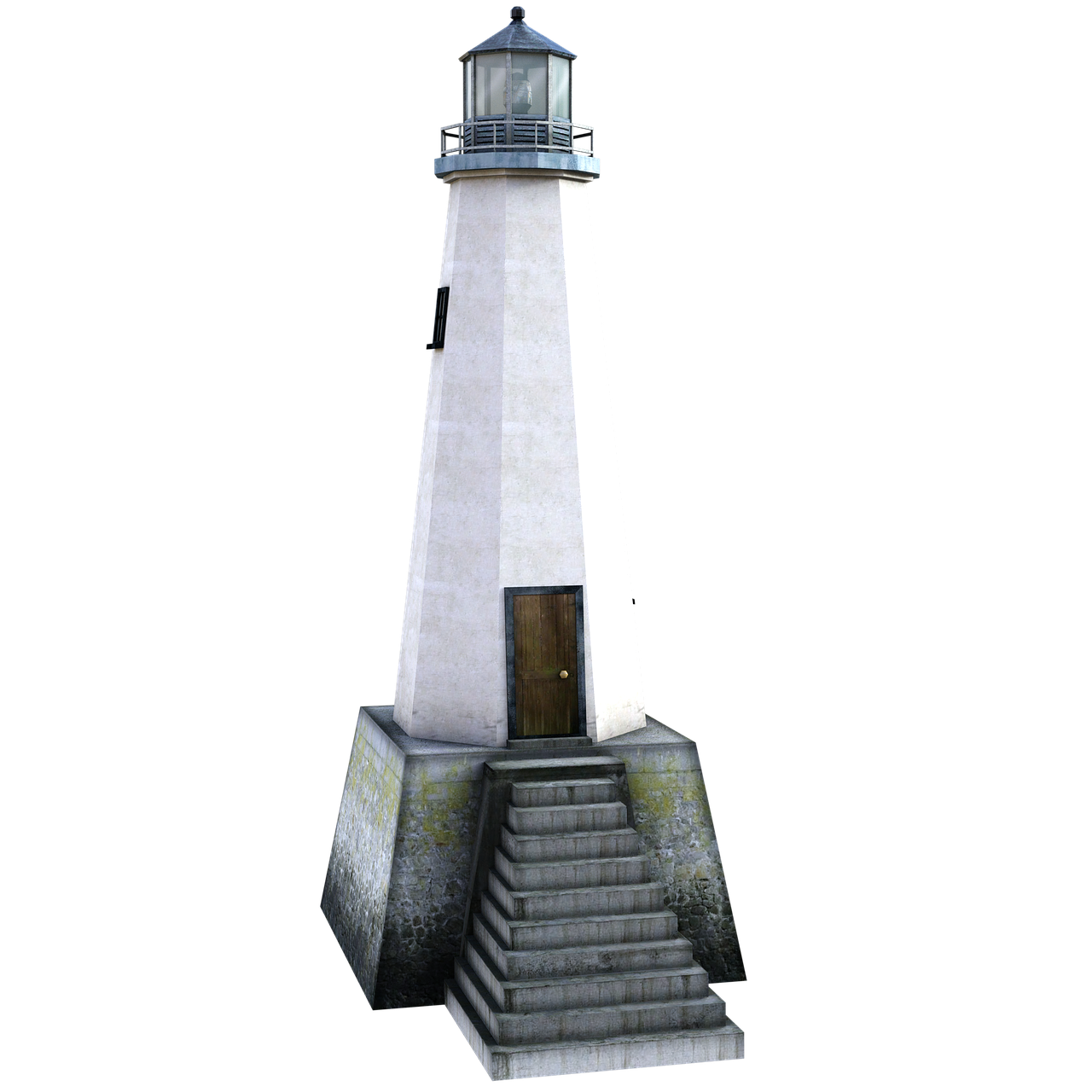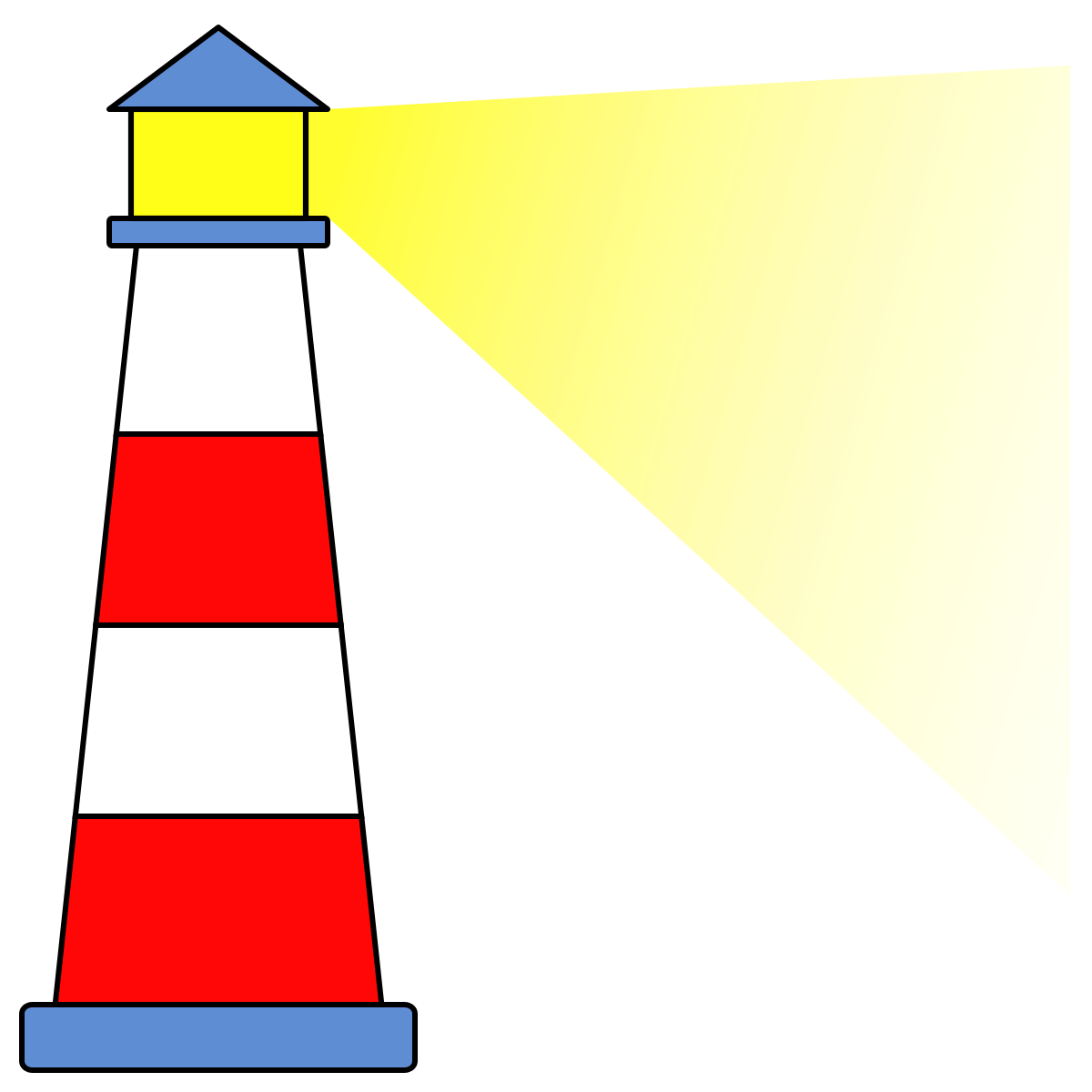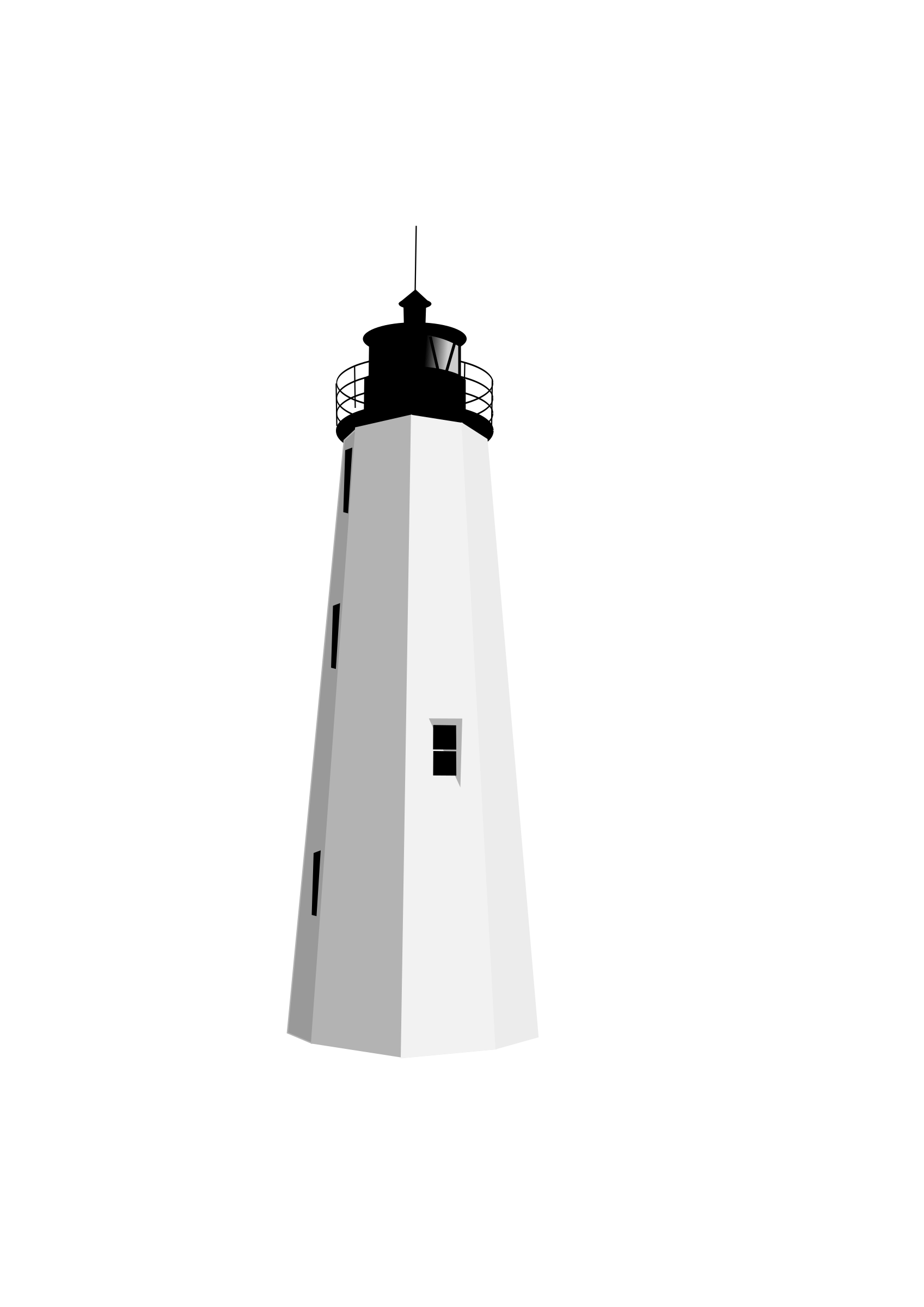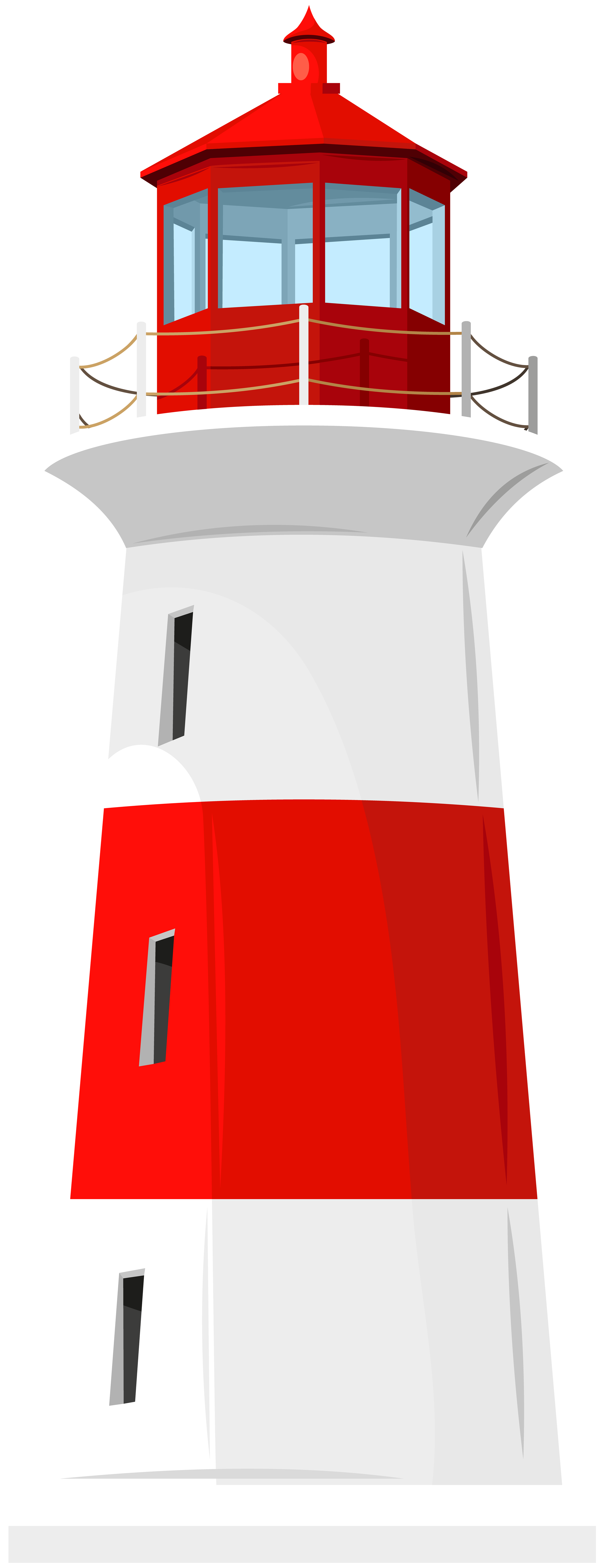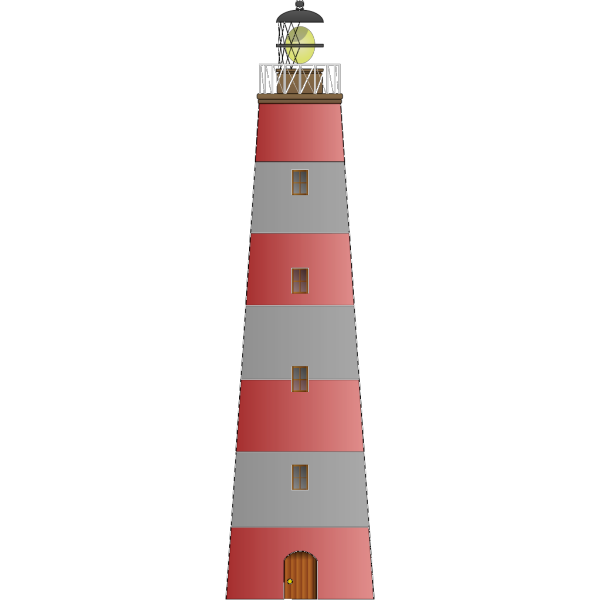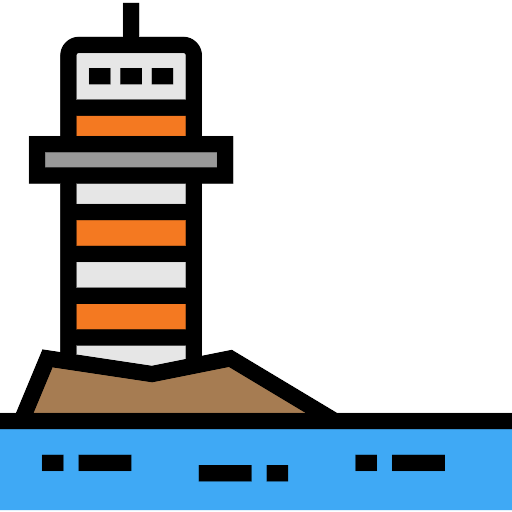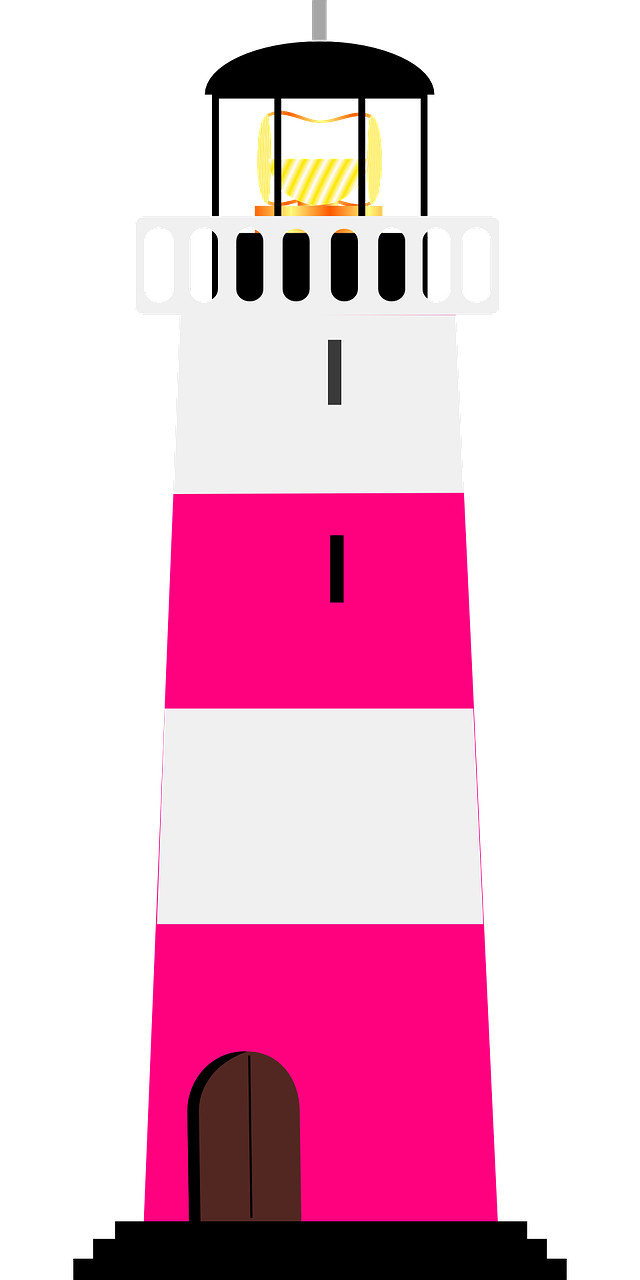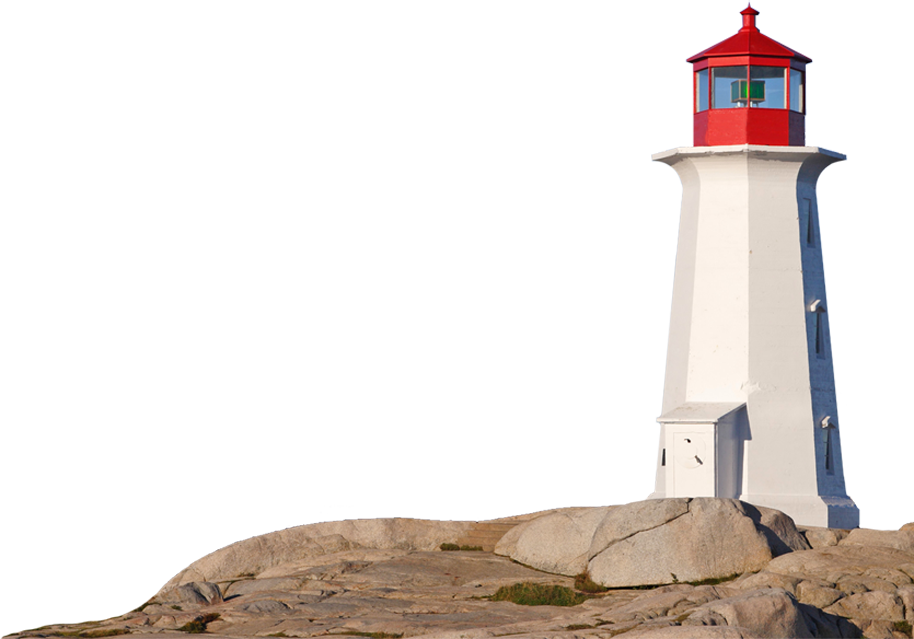Download top and best high-quality free Lighthouse PNG Transparent Images backgrounds available in various sizes. To view the full PNG size resolution click on any of the below image thumbnail.
License Info: Creative Commons 4.0 BY-NC
A lighthouse is a structure, such as a tower or a building, that emits light from a system of lamps and lenses and serves as a navigational aid for nautical pilots at sea or on interior waterways.
Lighthouses are used to identify perilous coasts, dangerous shoals, reefs, rocks, and safe harbor entrances, as well as to aid aerial navigation. The number of functioning lighthouses has decreased owing to maintenance costs and has become uneconomical with the introduction of cheaper and often far more effective electronic navigational equipment.
Mariners were led by flames placed on hilltops before the creation of clearly designated ports. Because setting the fire on a platform would increase visibility, it became a practice that led to the construction of the lighthouse. Unlike many modern lighthouses, the lighthouse in antiquity served as an entry marker to ports rather than a warning signal for hazards and promontories. The Pharos of Alexandria, Egypt, was the most renowned lighthouse structure from antiquity, and it was destroyed by a series of earthquakes between 956 and 1323 CE.
The Tower of Hercules, which is still standing in A Corua, Spain, provides insight into ancient lighthouse architecture; further evidence for lighthouses may be found in images on coins and mosaics, many of which portray the lighthouse at Ostia. There are additional coins from Syria’s Alexandria, Ostia, and Laodicea.
The modern period of lighthouses began at the beginning of the 18th century, when the number of lights built expanded dramatically as a result of growing transatlantic trade. Larger and more powerful lighthouses, notably those exposed to the sea, were made possible by advances in structural engineering and better and more efficient lighting technology. Lighthouses’ purpose evolved throughout time from designating ports to providing a visual warning about maritime dangers such as rocks and reefs.
For seamen traveling across the English Channel, the Eddystone Rocks were a major shipwreck danger. Henry Winstanley erected the first lighthouse there, an octagonal timber tower held by 12 iron stanchions fastened in the rock, between 1696 and 1698. His lighthouse was the world’s first tower to be completely exposed to the open sea.
From 1756 to 1759, civil engineer John Smeaton constructed the lighthouse; his tower was a notable step forward in lighthouse architecture and was in operation until 1877. He used granite blocks to create a lighthouse in the shape of an oak tree.
He unearthed and employed “hydraulic lime,” a Roman-era concrete that sets under water, and devised a method of holding granite blocks together using dovetail joints and marble dowels. Although Smeaton had to reduce the thickness of the tower towards the top, for which he curved the tower inwards on a gradual gradient, the dovetailing element served to increase structural stability.
This profile also had the added benefit of enabling part of the waves’ energy to dissipate as they collided with the walls. His lighthouse impacted all succeeding engineers as the template for the modern lighthouse.
Download Lighthouse PNG images transparent gallery.
- Vector Lighthouse PNG HD Image
Resolution: 896 × 696
Size: 630 KB
Image Format: .png
Download
- Vector Lighthouse PNG Image HD
Resolution: 639 × 636
Size: 40 KB
Image Format: .png
Download
- Lighthouse PNG Images HD
Resolution: 1920 × 1773
Size: 92 KB
Image Format: .png
Download
- Lighthouse PNG Free Image
Resolution: 721 × 1226
Size: 500 KB
Image Format: .png
Download
- Lighthouse PNG Image File
Resolution: 512 × 512
Size: 20 KB
Image Format: .png
Download
- Vector Lighthouse No Background
Resolution: 512 × 512
Size: 14 KB
Image Format: .png
Download
- Vector Lighthouse PNG Images HD
Resolution: 488 × 800
Size: 30 KB
Image Format: .png
Download
- Vector Lighthouse PNG Free Image
Resolution: 1356 × 1920
Size: 33 KB
Image Format: .png
Download
- Lighthouse Background PNG
Resolution: 650 × 1166
Size: 286 KB
Image Format: .png
Download
- Lighthouse PNG
Resolution: 512 × 512
Size: 24 KB
Image Format: .png
Download
- Lighthouse PNG Pic
Resolution: 1024 × 1024
Size: 330 KB
Image Format: .png
Download
- Lighthouse PNG File
Resolution: 1136 × 1641
Size: 63 KB
Image Format: .png
Download
- Vector Lighthouse PNG Image File
Resolution: 512 × 512
Size: 17 KB
Image Format: .png
Download
- Lighthouse PNG Image
Resolution: 512 × 512
Size: 10 KB
Image Format: .png
Download
- Vector Lighthouse Background PNG
Resolution: 555 × 648
Size: 43 KB
Image Format: .png
Download
- Vector Lighthouse PNG
Resolution: 600 × 510
Size: 36 KB
Image Format: .png
Download
- Vector Lighthouse PNG Pic
Resolution: 2000 × 2828
Size: 83 KB
Image Format: .png
Download
- Lighthouse PNG Photo
Resolution: 1280 × 1188
Size: 113 KB
Image Format: .png
Download
- Vector Lighthouse PNG File
Resolution: 512 × 512
Size: 18 KB
Image Format: .png
Download
- Lighthouse PNG Cutout
Resolution: 908 × 1500
Size: 1000 KB
Image Format: .png
Download
- Lighthouse PNG Images
Resolution: 1280 × 1280
Size: 707 KB
Image Format: .png
Download
- Vector Lighthouse PNG Image
Resolution: 1200 × 1200
Size: 66 KB
Image Format: .png
Download
- Vector Lighthouse PNG Photo
Resolution: 512 × 512
Size: 26 KB
Image Format: .png
Download
- Vector Lighthouse PNG Cutout
Resolution: 1697 × 2400
Size: 33 KB
Image Format: .png
Download
- Vector Lighthouse PNG Images
Resolution: 3094 × 8000
Size: 777 KB
Image Format: .png
Download
- Lighthouse PNG Photos
Resolution: 512 × 512
Size: 20 KB
Image Format: .png
Download
- Vector Lighthouse PNG Photos
Resolution: 600 × 600
Size: 36 KB
Image Format: .png
Download
- Lighthouse Transparent
Resolution: 512 × 512
Size: 46 KB
Image Format: .png
Download
- Lighthouse PNG Clipart
Resolution: 512 × 512
Size: 6 KB
Image Format: .png
Download
- Vector Lighthouse Transparent
Resolution: 640 × 1280
Size: 61 KB
Image Format: .png
Download
- Vector Lighthouse PNG Clipart
Resolution: 600 × 631
Size: 214 KB
Image Format: .png
Download
- Lighthouse
Resolution: 2352 × 856
Size: 33 KB
Image Format: .png
Download
- Lighthouse PNG Picture
Resolution: 914 × 639
Size: 331 KB
Image Format: .png
Download
- Lighthouse PNG HD Image
Resolution: 600 × 600
Size: 24 KB
Image Format: .png
Download
- Vector Lighthouse
Resolution: 2659 × 2660
Size: 1516 KB
Image Format: .png
Download
- Vector Lighthouse PNG Picture
Resolution: 511 × 488
Size: 130 KB
Image Format: .png
Download
- Lighthouse PNG Image HD
Resolution: 2007 × 7929
Size: 620 KB
Image Format: .png
Download
- Lighthouse No Background
Resolution: 601 × 1280
Size: 765 KB
Image Format: .png
Download

